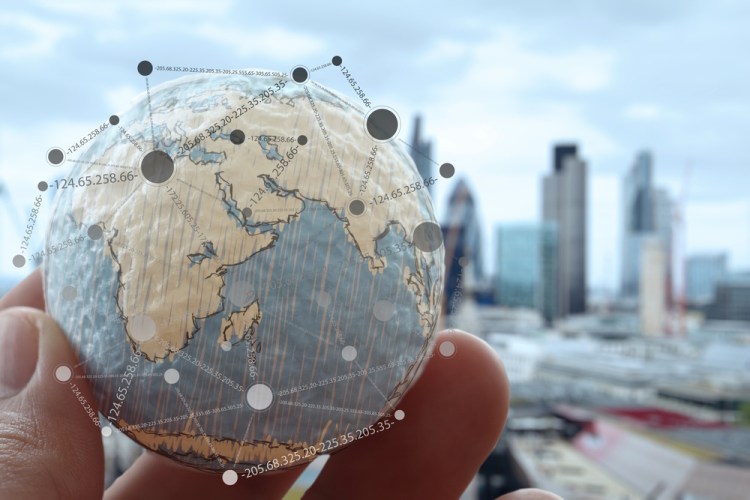Today’s workforce and automation of key functions is moving us toward an unprecedented level of innovation. One recent study from KPMG found that about three out of every four U.S. tech industry CEOs believe automation and machine learning are likely to replace at least 5 percent of their manufacturing, technology, sales, and marketing workforce by 2019. Yet the same study found that over half of the executives expect their organization’s headcount to grow by at least 6 percent.
While some big businesses might assume A.I. is their ticket to paying less in labor costs, if we go this route we’re selling our workforces short. The human brain possesses something computers still don’t: mindfulness. The more we leverage measurement, insight, data, and machines that prompt new ways of thinking, the more humans can do what they do best — think and apply thoughtfulness to their jobs.
Organizations that choose to cut back during, instead of lean into, this new wave of business intelligence and machine learning will miss out on opportunities for innovation. Joe Lonsdale, the prominent Silicon Valley capitalist and partner at 8VC, spent his early days as a cofounder of Palantir sorting through mega sets of unstructured data to pattern-match. Now as he chooses to work with companies like Hyperloop, RelateIQ and OpenGov, he first evaluates their “culture of technologists,” their ability to iterate, and their liberty to try new things. He says hiring talented people and empowering them to understand unforeseeable problems, with the help of artificial intelligence, is the next big wave in business.
Where data lives today
Today’s workers expect to be able to access connected data. Most of us are familiar with wearables that give us a complete picture of our health by providing access to our fitness data, or home security systems that use IoT data and imagery to inform users of suspicious activity. Now we’re wondering why work systems don’t intelligently connect the dots in the same way.
In the past decade, we’ve gone from having no data, to having data, to having, in some cases, data overload. From health care to finance, organizations in nearly every industry are transitioning from merely storing data to using it intelligently. Lonsdale founded “investment management technology” firm Addepar in 2009 to fix multi-trillion dollar segments of global finance by restructuring its data, in order to prime it for the artificial intelligence wave of the future.
The first step to leveraging artificial intelligence at work is surfacing data and adding visibility where it was previously non-existent. Just like Google changed the face of marketing by making it data-driven with analytics, next-generation workplace technology is rising to the challenge by surfacing an unprecedented amount of data about people, the way we work, and how we’re motivated long term. Successful organizations are staying one step ahead by structuring and finding meaningful data around their greatest asset: people.
Leaning in on artificial intelligence at work
Until this data existed, we had no way to measure a company culture or quantify work. Now, as the KPMG study showed, even though three-fourths of CEOs believe that automation and machine learning will replace at least 5 percent of their workforce, these executives still expect their headcount to grow. If computers can give the human mind greater insight into workflow, there’s no reason a business should cut down on its staff to utilize this powerful information.
Artificial intelligence is primed and ready to infiltrate the workforce. Big companies like Accenture, SAP, and Deloitte are trading in their traditional performance management ratings and rankings systems for technologies that bring transparency to data around the work employees do. This is creating huge opportunities for these businesses to leverage frequent touch points and check-ins with employees to get a holistic picture of what’s driving work. As this data surfaces, so does our ability to apply machine learning to compare trends across departments, workers, or organizations as a whole.
We’re seeing the need for artificial intelligence grow when we give companies a platform to surface normalized data that reveal how a person works. Our customers have reported spotting trends in labor and management because they can accurately compare goal achievement between departments. Data signals are telling organizations what their employees might do next.
Systems (or bots) possess the ability to track behaviors throughout the lifetime of an employee, from the time they were hired to their success down the road, and understand why they have been so successful. This information — a normalized view of the way a person works — can grow into future opportunities for hiring similarly equipped employees. We can finally focus on building teams to support long-term goal achievement, instead of frantically hiring to fill immediate needs.
This is why artificial intelligence is ready to take over the hiring and recruiting process. When you have data on the success of employees and can fully understand what’s driving their success, it becomes possible for systems to pattern-match a successful employee with a prospective new hire and make suggestions for building a “dream team.” Intelligent systems can now help business leaders spot trends in attrition or identify patterns across employees who are exiting the workforce.
This kind of intelligence is not helpful when left alone in a repository. When we’re talking about pairing data with people, we need the human brain to make the ultimate call. In the case of knowledge workers, artificial intelligence should never be about cutting labor. That’s taking a step back. Pair this intelligence with the human brain and you’ll be on to solving problems that have yet to surface.


